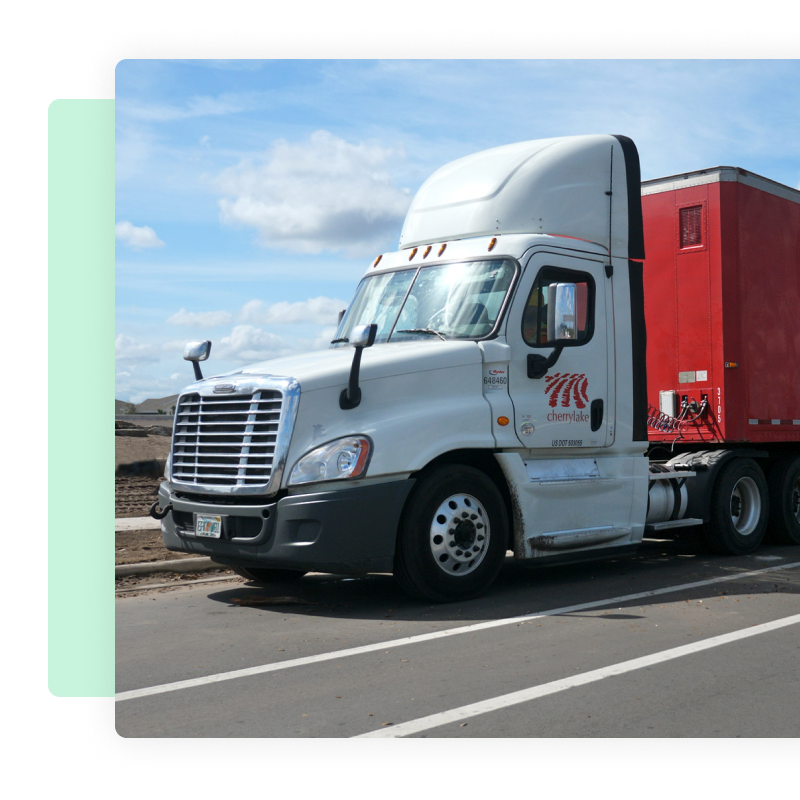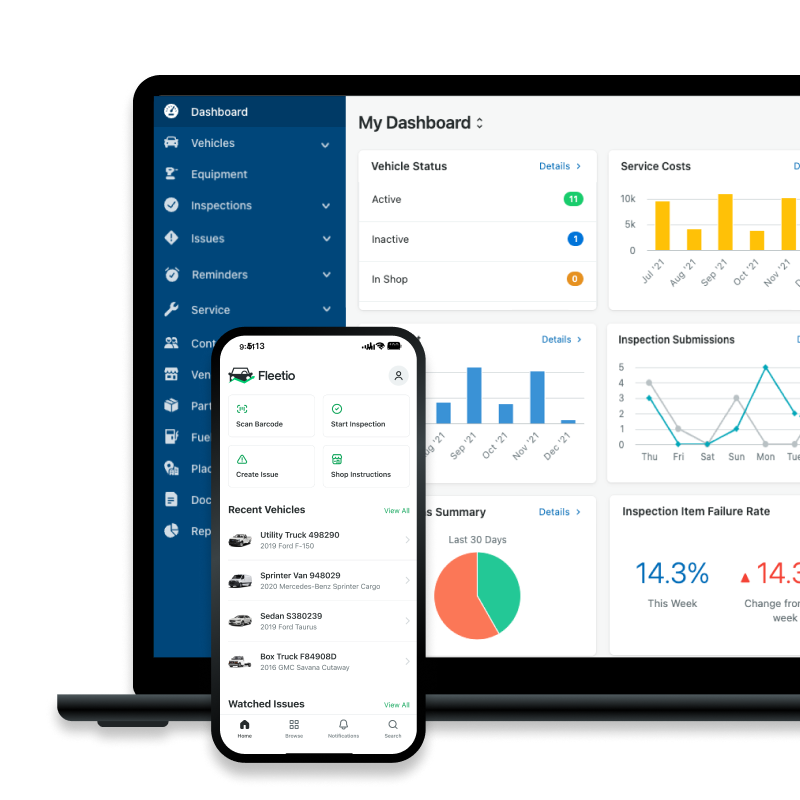The Complete Owner-operator Startup Checklist
Becoming an owner-operator (OO) gives truck drivers more autonomy and earning potential, but it also comes with the responsibilities of running a business. This clear, practical checklist guides you step by step — from budgeting startup costs and buying vs. leasing to marketing and maintenance. Get peace of mind with expert tips and essential resources.
Jul 21, 2023 | Updated: Jul 28, 2025
6 min read

What is an owner-operator?
Owner-operators are individuals who own and operate their own trucking businesses, handling both the driving and business side of their operations. Starting your own owner-operator trucking business? There are two main types of OOs: those with authority and those without.
An OO with authority is an independent business owner who handles everything from truck purchase and maintenance to booking loads, managing expenses and securing insurance. In contrast, an OO without authority leases on with a carrier and operates more like a subcontractor, minimizing administrative work but giving up some independence.
Whether you choose to operate under your own authority or lease on, it’s important to understand the key decisions, legal requirements and costs involved. Use this checklist to help you plan your path to becoming a successful owner-operator.
How to Start an Owner-operator Trucking Business
1. Create a business plan
Before launching your business, research your niche in the trucking industry. Identify:
- Your target freight type and routes
- Competitors in your lane or region
- Current demand and rates
Pro Tip
Don't just search for what others are doing, figure out what they're not doing. See how you can stand out, such as offering more reliable delivery, specialized hauling or better customer service.
Further, startup and ongoing costs can add up quickly. Make sure to budget for truck purchases or lease payments, fuel and tolls, maintenance and repairs, insurance premiums and licenses and permits. In your financial planning, prepare for possible rising fuel costs. Understanding your total cost of ownership (TCO) and cost per mile (CPM) helps you stay profitable. Budgeting also helps you secure financing and build a solid business plan.
2. Register your business
You’ll need to set up your business legally and comply with both state and federal regulations. To start, choose your business structure, whether it be an LLC, S-corp, or sole proprietorship.
- An LLC provides legal liability protection and has flexible tax treatment, but includes more paperwork and requires self-employment tax
- S-corps can potentially help you save on self-employment taxes and avoid double taxation, but there is a more complex setup and stricter IRS requirements
- Sole proprietorships are simple to file and manage and do not require a separate business tax return, but you have to pay self-employment tax on 100% of your business income and personally assume all liabilities
Next, apply for an Employer Identification Number (EIN) through the IRS. It’s also important to open a bank account for your business.
3. Get a CDL
To drive trucks yourself, you’ll need a commercial driver’s license (CDL). Getting a CDL requires meeting federal and state requirements, like passing certain knowledge and skills tests and satisfying certain medical and residency requirements. Make sure your CDL is appropriate for the class of asset you intend to operate and that it meets any endorsement requirements.
4. Apply for USDOT Numbers
If you plan to operate across state lines, you must register with the Federal Motor Carrier Safety Administration (FMCSA) and obtain a USDOT number for fleet identification and safety tracking. While MC numbers are still in use currently, regulatory updates have them set to be phased out on October 1, 2025.. Obtaining these numbers requires paying fees and designating process agents through BOC-3 filing. BOC-3 filing designates agents in each state the company operates in to receive legal documents on the company’s behalf, and this process must be completed before you can be activated by the FMCSA.
5. Purchase insurance
To become an owner-operator, you must meet FMCSA insurance requirements, which typically include primary liability coverage, cargo insurance, physical damage coverage and bobtail (non-trucking liability) coverage. You can contact a commercial trucking insurance specialist to get quotes and see what best suits your operation.
Know the cost before it costs you
Every mile comes with a price — fuel, labor, repairs, insurance. You name it. Our breakdown of ATRI’s latest data shows what’s climbing, what’s cooling off and where you can make cuts without risking your rig or your reputation.
Let’s get after it6. Join a drug and alcohol testing program
If you’re a CDL holder operating under your own authority, you must be enrolled in a DOT-approved drug and alcohol consortium. This ensures compliance with testing requirements before and during employment.
7. Set up an ELD
Per FMCSA regulations, you’re required to track hours of service using an electronic logging device (ELD). Choose an FMCSA-registered ELD that integrates well with your operation. You can use ELD-specific platforms or telematics with ELD features to log hours automatically. You can even integrate these tools with a fleet optimization platform to streamline compliance reporting.
8. Prepare driving qualification files
It is crucial to keep your driver qualification up to date. This should include:
- CDL copy and medical examiner’s certificate
- Safety performance history
- Pre-employment drug test results
These files are critical during audits and must be readily accessible. Fleet optimization platforms like Fleetio can help ensure such documents are available whenever you need them.
9. Schedule asset inspections
Routine inspections are required to stay compliant and ensure safety. Follow FMCSA guidelines for daily vehicle inspection reports (DVIRs) and annual DOT inspections. Explore this guide to equipment maintenance procedures to create a more proactive and cost-effective inspection process. Digital fleet solutions can help track inspection history, maintenance tasks and scheduling.
10. Stay compliant with FMCSA rules
Fleet compliance isn’t a one-time task — it’s ongoing. Stay audit-ready by monitoring your CSA scores, maintaining logs and driver files and keeping permits and insurance current. Learn how to avoid common IFTA reporting mistakes that can cost time and money, and use digital tools to simplify your reporting process.
Set Your Business up for Success
Launching an owner-operator business takes work, but a clear plan helps you stay focused and confident. Use this checklist to guide your decisions, avoid costly mistakes and build a solid foundation.
Stay flexible, keep learning and invest in tools that support your business. Attending events like trucking conferences and trade shows is also a great way to build your network and learn from others in the industry. With the right systems in place, you’ll be better equipped to succeed as a self-employed owner-operator.
You drive the truck, we’ll lighten the load
When you’re running solo, FMCSA standards, DVIRs and staying on top of maintenance can weigh on you fast. That’s where we come in. Fleetio helps you manage it all — from your phone to your home — all in one place.
Check it outFAQs
How long does it take to become an owner-operator?
Becoming an owner-operator can take anywhere from a few weeks to several months, depending on how prepared you are and how quickly you complete the necessary steps.
What are the ongoing compliance requirements for owner-operators?
Owner-operators must stay compliant with USDOT authority, maintain required insurance coverage and use an ELD to track hours of service. Your USDOT number needs to be updated every two years. For insurance, you’ll need to maintain proper liability and cargo insurance. The use of ELDs is required to be compliant with FMCSA regulations, and you should keep logs and supporting documents for around six months to be safe.
Can I start with a leased truck instead of buying?
You can start with either a bought or a leased truck. Many owner-operators start with leasing because it is more affordable and carries less risk. It is important to choose the route most fitting to your business and circumstances.
Do I need a CDL to start a trucking business?
You do not need a CDL to start a trucking business, but you will need a CDL if you plan on driving trucks yourself.

Senior Fleet Content Specialist
As a Senior Fleet Content Specialist at Fleetio, Rachael Plant uses her near decade of industry experience to craft practical content aimed at helping fleet professionals tackle everyday challenges with confidence.
LinkedIn|View articles by Rachael Plant
PR Intern
As a public relations intern at Fleetio, Audrey Patterson has learned the ropes of the fleet and trucking industries. She assists in media outreach and content creation to help fleets find solutions to common industry challenges.
View articles by Audrey PattersonReady to get started?
Join thousands of satisfied customers using Fleetio
Questions? Call us at 1-800-975-5304

